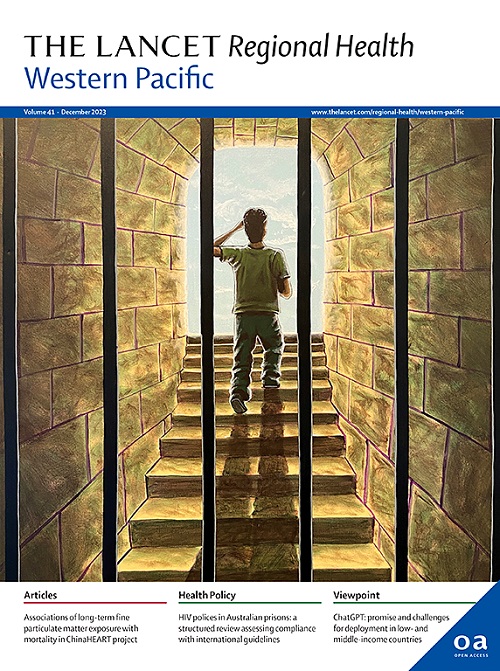Assessing patterns of chronic kidney disease care in Australian primary care: a retrospective cohort study of a national general practice dataset
IF 7.6
1区 医学
Q1 HEALTH CARE SCIENCES & SERVICES
引用次数: 0
Abstract
Background
Chronic kidney disease (CKD) monitoring and cardiovascular risk management are essential in reducing disease progression and cardiovascular events. This study aimed to understand CKD monitoring and management practices in Australian primary care.
Methods
We conducted a retrospective, population-based cohort study of adults who attended general practices participating in MedicineInsight between 1 January 2011 and 30 June 2020 and met diagnostic criteria for CKD. Care quality was assessed in the 18-months following identification of CKD. Core monitoring was defined as at least one assessment of all the following measurements: blood pressure, estimated glomerular filtration rate (eGFR), urine albumin creatinine ratio (UACR), lipid profile, and HbA1c in patients with diabetes. Cardiovascular risk management comprised medication prescription (ACEi/ARB and statin), blood pressure target achievement and LDL cholesterol <2 mmol/L. Modified Poisson regression models adjusted for socio-demographic and clinical characteristics were used to identify patient factors associated with completion of monitoring and medication prescription.
Findings
CKD was identified in 140,780 patients, of which 34.2% received core monitoring within 18 months of CKD identification. Measurement of the individual components of the core monitoring outcome varied: blood pressure (88.7%), eGFR (86.0%), UACR (41.1%), lipids (70.9%) and HbA1c (85.5%). ACEi/ARB were prescribed in 65.2% of the cohort and 54.4% were prescribed a statin. Blood pressure targets of <140/90 mmHg and <130/80 mmHg were achieved in 57.9% and 29.3% of patients, respectively. LDL target of <2 mmol/L was achieved in 38.8% of patients. Older age, comorbid diabetes and hypertension were associated with a greater likelihood of monitoring and medication prescription.
Interpretation
In this large, population-based study, we observed substantial variation in CKD risk monitoring and the management of cardiovascular risk in patients with CKD. We identified several priority areas for CKD management in primary care including need for improvement in albuminuria monitoring.
Funding
University of New South Wales Scientia Program and Boehringer Ingelheim Eli Lilly Alliance.
评估澳大利亚初级保健中的慢性肾脏疾病护理模式:一项全国全科医生数据集的回顾性队列研究
背景:慢性肾脏疾病(CKD)监测和心血管风险管理对于减少疾病进展和心血管事件至关重要。本研究旨在了解澳大利亚初级保健的CKD监测和管理实践。方法:我们对2011年1月1日至2020年6月30日期间参加MedicineInsight全科诊所并符合CKD诊断标准的成年人进行了一项回顾性、基于人群的队列研究。在确定CKD后的18个月内评估护理质量。核心监测被定义为以下所有测量的至少一项评估:糖尿病患者的血压、肾小球滤过率(eGFR)、尿白蛋白肌酐比(UACR)、血脂和HbA1c。心血管风险管理包括药物处方(ACEi/ARB和他汀类药物)、血压达标和低密度脂蛋白胆固醇2 mmol/L。使用修正的泊松回归模型调整社会人口统计学和临床特征,以确定与监测完成和药物处方相关的患者因素。发现在140,780例患者中发现了sckd,其中34.2%的患者在发现CKD后的18个月内接受了核心监测。核心监测结果的各个组成部分的测量各不相同:血压(88.7%),eGFR (86.0%), UACR(41.1%),血脂(70.9%)和HbA1c(85.5%)。65.2%的队列患者使用ACEi/ARB, 54.4%的队列患者使用他汀类药物。57.9%和29.3%的患者分别达到了140/90 mmHg和130/80 mmHg的血压目标。38.8%的患者达到了2 mmol/L的LDL目标。年龄较大、合并症糖尿病和高血压与监测和药物处方的可能性较大相关。在这项基于人群的大型研究中,我们观察到CKD风险监测和CKD患者心血管风险管理的实质性变化。我们确定了初级保健中CKD管理的几个优先领域,包括需要改进蛋白尿监测。资助新南威尔士大学科学项目和勃林格殷格翰礼来联盟。
本文章由计算机程序翻译,如有差异,请以英文原文为准。
求助全文
约1分钟内获得全文
求助全文
来源期刊

The Lancet Regional Health: Western Pacific
Medicine-Pediatrics, Perinatology and Child Health
CiteScore
8.80
自引率
2.80%
发文量
305
审稿时长
11 weeks
期刊介绍:
The Lancet Regional Health – Western Pacific, a gold open access journal, is an integral part of The Lancet's global initiative advocating for healthcare quality and access worldwide. It aims to advance clinical practice and health policy in the Western Pacific region, contributing to enhanced health outcomes. The journal publishes high-quality original research shedding light on clinical practice and health policy in the region. It also includes reviews, commentaries, and opinion pieces covering diverse regional health topics, such as infectious diseases, non-communicable diseases, child and adolescent health, maternal and reproductive health, aging health, mental health, the health workforce and systems, and health policy.
 求助内容:
求助内容: 应助结果提醒方式:
应助结果提醒方式:


